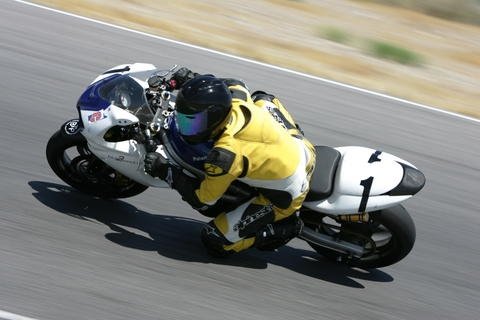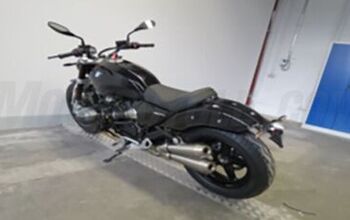Trizzle's Take – Millennials and Motorcycles

My dad is what you would call, very “old school.” Mention carburetors, throttle cables, and distributor caps, and you have his full attention. Though he was more a car guy than a bike guy, talk about the “good ol’ days,” and he’ll regale you with tales of his youth — when roadside repairs consisted of bubble gum and a screwdriver, or when “garage mechanic” had a more literal meaning. As soon as the conversation drifts to such 21st-century items as ride-by-wire, traction control, and electronic fuel injection, a look of disdain fills his face, followed by a scoff at such newfangled, “complicated technology.” It’s a minor miracle I even had a digital calculator when I was in school.
This year marks the tenth year I’ve been riding motorcycles — likely a relatively short amount of time compared to many of you reading this. Pops was against me riding a motorcycle during my childhood and still isn’t thrilled that I do it now. But as we all know, it’s hard to keep a determined teenager down.
I discovered this sport towards the end of the analog period of motorcycles and learned all about them by wrenching on my first two specimens, a 1990 Yamaha FZR600 and 2000 Suzuki SV650 — two distinctly analog motorcycles. I mostly wrenched by myself, but every now and then the ol’ man would peek his head in and occasionally get his hands dirty. Father-son bonding at its best.
Then I entered the moto-journalism business. Suddenly, I was handed brand new motorcycles and had to learn the latest in motorcycling. I didn’t know how I’d adapt – considering my upbringing – from outdated technology. Would I be lost? Not understand the concepts at all?
Turns out the basics never change. The throttle, clutch, shifter, and brakes all do the same thing. After reading guest contributor, Chris Kalfelz’s Head Shake column, Future Shock, I was reminded of my dad and how he would likely have the same reaction as Kalfelz to modern motorcycle technology — a necessary evil. As humans, we naturally fear the unknown. Computer programming is a big one in regard to older generations of riders.
But it’s also undeniable the benefits modern bikes make available to the average rider: programmable electronic fuel injection, power modes, traction control, ABS, wheelie control, you name it. After every sportbike test we conduct at MO, there’s always the commenter who chastises these technologies as inhibiting the new rider from learning proper motorcycling “the old-fashioned way.” As someone who came up relying on only my right wrist for traction control and even won a roadracing championship on motorcycles without TC, I can confidently say that I embrace the new march of technology in today’s bikes.
Two moments stick out in my mind as signaling my personal acceptance of digital from analog. The first came in 2008. I was at the famous Jerez de la Frontera circuit in Spain at the world press launch of the brand new Ducati 1098R — the first production motorcycle with traction control. I remember following another rider into a fast left sweeper. With my knee on the deck, I see the rider inching away from me. Wanting to keep up, I gave the 1098R a generous helping of throttle. I felt the rear slide then grip, then slide and grip again, leaving a squiggly black line behind as it continued this dance until sufficient grip was reached. I didn’t realize it at the time, but the traction control had just saved me from a massive highside.
The second was a trackday at Spring Mountain Motorsports Ranch in Pahrump, Nevada. I was testing a 2010 Kawasaki ZX-10R we had fitted with simple mods like a pipe and fuel management system. After each session I simply plugged in a laptop, pressed a few buttons, hit enter, and altered the performance of the motorcycle. My hands never got dirty and I didn’t have to scramble with swapping jets and putting the carb back together before the next session. I’ve found modern motorcycle technology fascinating ever since.
From a rider’s standpoint, to me every bike has its time and place. I still enjoy hopping on analog bikes for their sheer simplicity. Still, I’m a naturally curious person, and seeing all the different buttons, options, and technologies on modern motorcycles allow me to explore is an enjoyable process for me. As I experienced in 2008, those technologies could possibly save not just my life, but yours as well. Who wouldn’t be a fan of that?
Personally, I found (and still find) the learning process with new motorcycles to be enjoyable. Confusing at times, yes, but in the back of my mind, I know these technologies will either help me ride faster, safer, or both. While I appreciate the analog motorcycles of yore, I don’t miss busted knuckles and gas spilling everywhere only to find out the mod I made didn’t help. I like wrenching just as much as the next guy, but I enjoy riding more. Replacing the wrench with a laptop in this digital age has given me more time to do that, and to do it with more confidence than ever before. I like that.

Troy's been riding motorcycles and writing about them since 2006, getting his start at Rider Magazine. From there, he moved to Sport Rider Magazine before finally landing at Motorcycle.com in 2011. A lifelong gearhead who didn't fully immerse himself in motorcycles until his teenage years, Troy's interests have always been in technology, performance, and going fast. Naturally, racing was the perfect avenue to combine all three. Troy has been racing nearly as long as he's been riding and has competed at the AMA national level. He's also won multiple club races throughout the country, culminating in a Utah Sport Bike Association championship in 2011. He has been invited as a guest instructor for the Yamaha Champions Riding School, and when he's not out riding, he's either wrenching on bikes or watching MotoGP.
More by Troy Siahaan



































Comments
Join the conversation
as a younger man rode old and home built motorcycles. lot of fun. now have 2014 w/ABS. no comparison. if you like your hands numb and your ears ringing, build a bobber. TC and ABS add to safety/ confidence.like the difference between bias ply and radials. like riding fast, still enjoy older scoots, just prefer newer models
Your article brings up points that riders can certainly agree on. Having discovered motorcycles in 1979, I've been lucky to have seen motorbikes evolve from the primordial ooze, to the futuristic robots we take for granted today. I for one, relish the awesomeness of F.I., having suffered the delirium of endless despair in trying to get that float bowl level just right - on all 4 carbs....no thanks ever again! Still, I wonder what the Craigslist ads will be like in 30 years when all these computery wonderbikes are being touted as 'vintage'....will we still be able to fix em up with a screwdriver, vise grip, and duct tape?